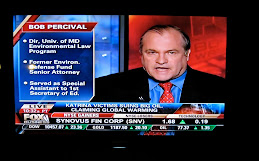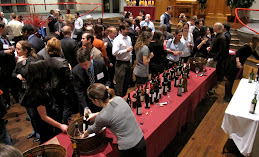On October 10 representatives from 92 nations signed the Minimata Convention on Mercury. The signing ceremony was held in Minimata, Japan, site of horrendous mercury poisoning caused by a chemical plant dumping mercury into the harbor of the small fishing village during the 1950s and 1960s. Countries signing the treaty pledged to control emissions of mercury from new powerplants and to phase out the use of mercury in many products by the year 2020. All mercury mining is to be neded in 15 years. The treaty will take effect when ratified by 50 countries, which is expected to occur in three to four years. Representatives of the U.S., who helped negotiate the treaty, left early without signing it due to the government shutdown.
On October 9 victims of the deadly cholera epidemic in Haiti filed a class action lawsuit against the United Nations in federal district court in New York. The lawsuit alleges that the October 2010 cholera outbreak, the first in Haiti in more than a century, can be traced to human sewage from Nepalese UN peacekeepers that leaked from pipes at the base of the United Nations Stabilization Force into a tributary of the Artibonite River. It is estimated that 8,300 Haitians died in the outbreak and 650,000 others were taken ill. The UN undoubtedly will assert its long-established immunity from suit under the Convention on the Privileges and Immunities of the UN of 1946. While expressing sympathy for the plight of the victims, UN officials have not conceded that its sewage caused the outbreak. Plaintiffs argue that the Convention specifies that the UN is to establish appropriate modes of settlement for third-party private law claims, but that it has failed to do so. Due to the UN’s immunity, the lawsuit is likely to be dismissed, but the widespread publicity it is receiving may increase pressure on the UN to provide some form of compensation to the victims.
France’s Constitutional Council has upheld that country’s ban on hydraulic fracturing. The court rejected an appeal by a U.S.-based company, Schuepback Energy, which had been issued two permits to explore for shale gas prior to the fracking ban taking effect. The court held that the environmental purpose of the fracking ban was legitimate, despite the company’s claim that there was no proof of environmental harm from fracking. The company’s lawyers said they would continue separate litigation challenging the cancellation of their permits and seeking compensation of €1 billion. The decision was denounced by the French energy industry’s trade association, the GEP-AFTP, but applauded by Phillippe Martin, France’s environmental minister. While France is believed to have some of the largest reserves of shale gas and oil in the EU, due to more extensive use of fracking in the U.S., the price of natural gas in Europe is three to four times higher than in the U.S. Hugh Carnegy, France Upholds Ban on Fracking, Financial Times, Oct. 12, 2013, at 10.
This week I participated in three different conferences in three days. On Wednesday I spoke on the opening panel of the Virginia Environmental Law Journal’s Symposium on “The Promise and Limits of Presidential Action on Climate Change.” The symposium was held at the University of Virginia Law School in Charlottesville. Also on my panel were former EPA Assistant Administrator Jeff Holmstead, UVA Law Professor Michael Livermore, UCLA Law Professor Ann Carlson, and USF Law Professor Alice Kaswan. Our panel discussed the Obama Climate Action Plan, EPA’s proposed new source performance standard for powerplant carbon emissions, and EPA’s plans to use §111(d) of the Clean Air Act to regulate existing sources. I gave a brief history of the use of presidential authority to protect the environment and argued that it is particularly appropriate for the President to act when Congress is in gridlock on environmental issues. Prior to driving my Tesla down to Charlottesville, I was surprised to learn that there was only a single, public EV charging station there (in the Central Grounds Parking Garage on campus), but I was able to use it with no problem and drive back to Baltimore for my Environmental Law class late Wednesday.
On Wednesday evening I attended a party at the National Aquarium in Baltimore sponsored by the law firm of Beveridge & Diamond. The party was held in conjunction with the 21st Fall Conference of the ABA Section on Environment, Energy and Resource (SEER) Law. I was delighted to see many of my former students at the party, including many who now work at the firm.
On Thursday I spoke on a panel at the ABA SEER conference on the constitutional limits to state authority to combat climate change. I provided an opening overview of preemption and dormant commerce clause doctrines and how they have been applied in environmental cases. I emphasized that the basic doctrines are relatively simple (the former focusing on congressional intent and the latter on whether state laws discriminate against interstate commerce), but they are often difficult to apply in practice. I then introduced the Ninth Circuit’s September 18th decision in Rocky Mountain Farmers Union v. Corey (see Sept. 22, 2013 blog post), which rejected claims that California’s Low Carbon Fuel Standard (LCFS) violated the dormant commerce clause. Also on the panel with me were Sean Donahue, who argued Rocky Mountain Farmers for the victorious environmental intervenors, and Shannon Broome, who represented the plaintiffs. The Ninth Circuit’s decision does an excellent job of explaining how the LCFS calculates carbon intensity and why it does not discriminate against out-of-state fuel producers even though some carbon intensity values are calculated on the basis of location.
On Thursday night I flew to Boston where I attend the annual meeting of the American College of Environmental Lawyers (ACOEL) on Friday and Saturday. Jim Bruen, who came to China with me in August as part of ACOEL’s pro bono project, presented a report on the progress of this initiative, which has resulted in the signing of memoranda of understanding making ACOEL a clearinghouse for connecting U.S. environmental lawyers with Chinese environmental groups, including the Beijing office of the Natural Resources Defense Council. At the luncheon on Friday I spoke to ACOEL’s Policy Committee about the work of environmental groups in China. On Saturday morning I met in Boston with representatives of a Chinese company interested in designing innovative new approaches to teaching about sustainability and energy policy, a possible project for my sabbatical next year.
The U.S. Supreme Court did not make any announcement on Friday concerning the cert petitions it is considering that pertain to the D.C. Circuit’s June 2012 decision upholding EPA’s initial greenhouse gas regulations. The Court may announce whether it is granting any of the nine petitions on Tuesday (the Court is closed tomorrow for the Columbus Day holiday).

















